Types of lilies: 16 gorgeous varieties to choose from
It’s worth planting different types of lilies for the divine glamour and scent they will bring to your summer garden

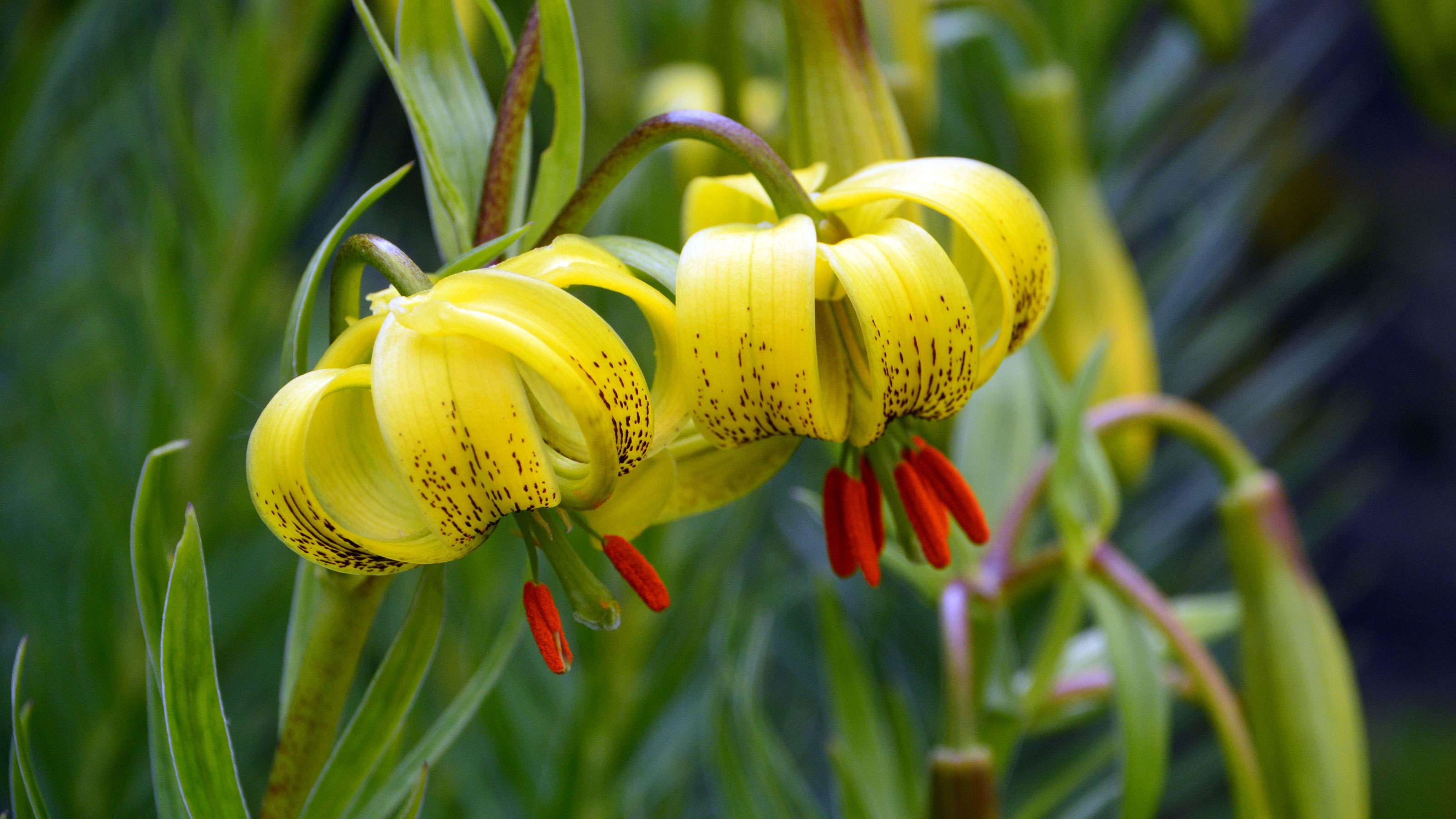
There are many different types of lilies, ranging from towering beauties to more discreet, petite varieties, but they all share stunning, show stopping flowers. There are many plants that are referred to as lilies. However, the true lily species come from as far apart as Europe, Asia and North America.
There have been hundreds of types of lilies bred from these over the years so it’s not hard to find one to suit your garden. There are lilies for sun and semi-shade, as well as for acidic and alkaline soils. And the good news is that although their flowers look quite ethereal, they are tough plants that don’t need a lot of fuss.
Legend has it that the first lily sprang from the tears of Eve as she left the garden of Eden. Lilies often featured in religious paintings too, which underlines a fascination for lilies going back thousands of years.
Lilies are hardy bulbs that you can plant in fall or spring, and they don’t need lifting and storing over winter like dahlias. If you give them the right conditions, once you've learned how to grow lilies they will spread and multiply to form wonderful natural clumps. Once established, they will need dividing in fall every few years, but they also work well in containers and, of course, make great cut flowers to bring indoors.
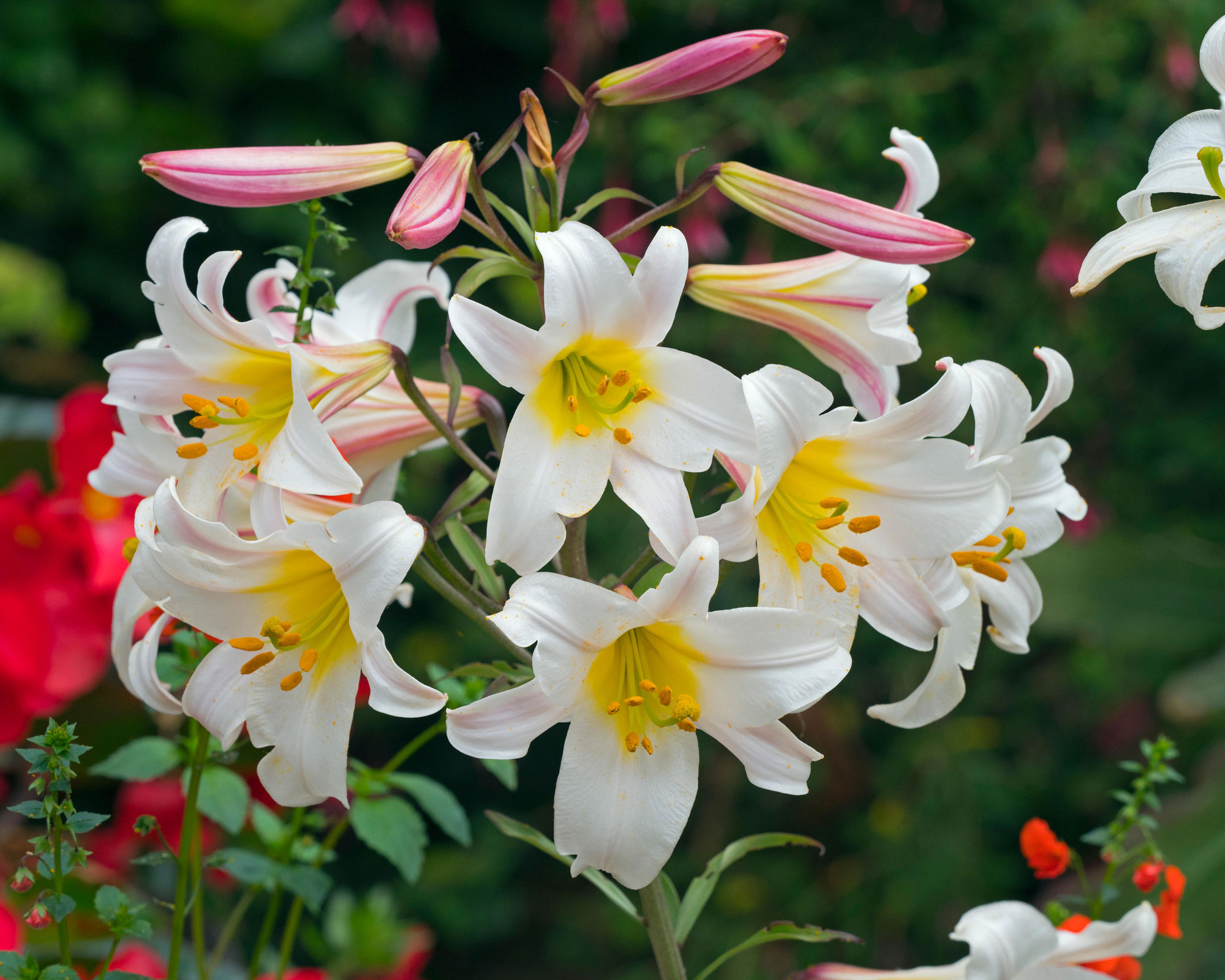
16 gorgeous types of lilies to grow
With so many different types of lilies to choose from, which one should you pick for your garden? If you're unsure, we're here to help, by rounding up some of our very favorite varieties. Choose one or more of these and they will soon be the superstars of your flower bed ideas this summer.
1. Lilium ‘Red Velvet'

- Hardiness: USDA 3a-8b
- Height: 48in (120cm)
A hybrid Asiatic tiger lily, producing plenty of large, scarlet, freckled flowers, which are stunning but unscented. The slightly upswept petals are a little like the smaller Turk’s cap varieties.
With the capacity to carry up to 20 blooms per stem and a long-flowering period, they make a great accent plant for hot-colored garden border planting ideas. Try combining them with tall eremurus (foxtail lilies) for contrast. This is one of the types of lilies that prefer well-drained alkaline soil types.
2. Lilium ‘Casa Blanca’
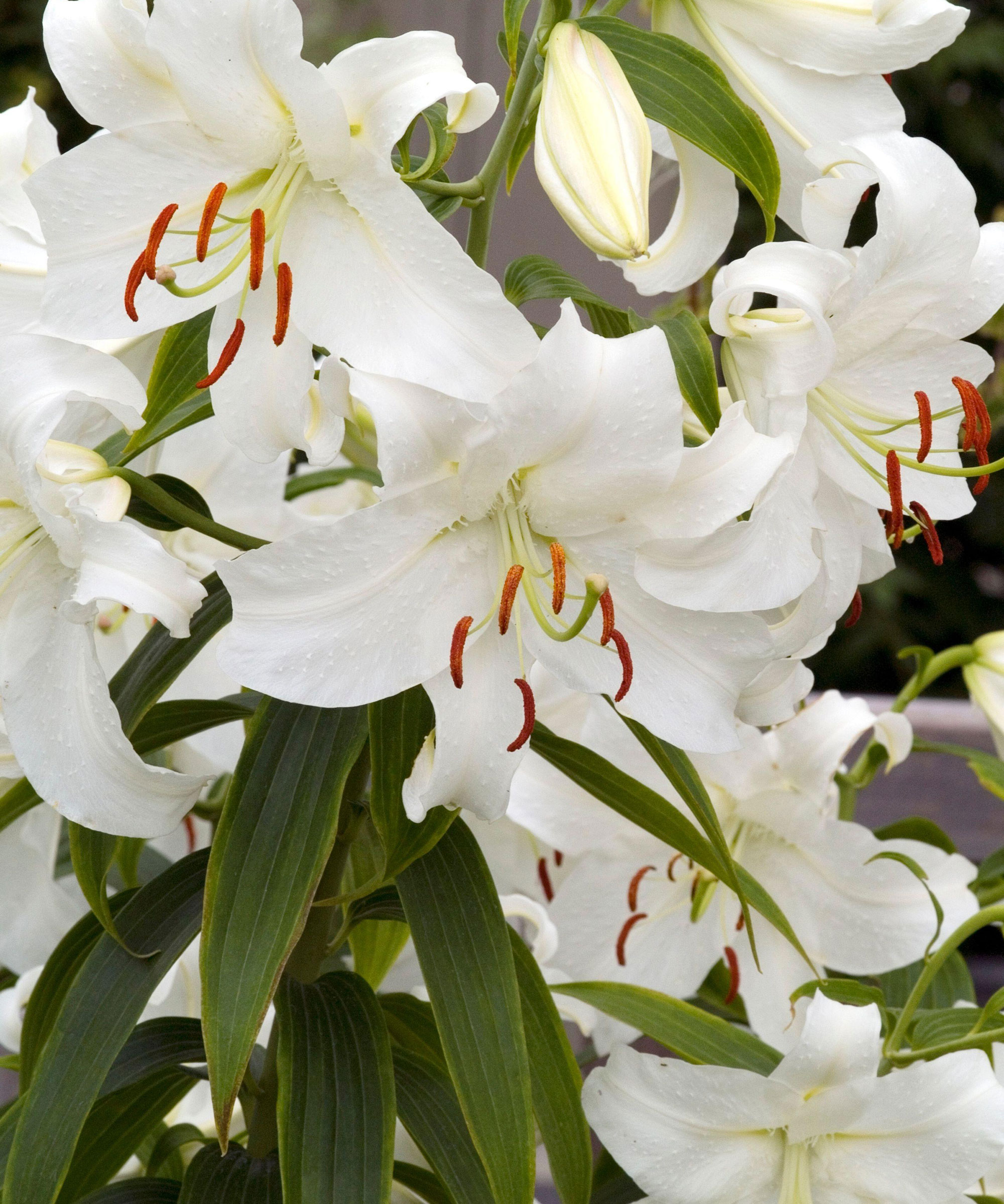
- Hardiness: USDA 4-9
- Height: 48in (120cm)
With the purest of white flowers, ‘Casa Blanca’ is widely regarded to be one of the best white oriental lilies, flowering for around four weeks in late summer to early fall.
The flowers are scented so great for planting near a seating area or for cutting and enjoying indoors. They look good planted in groups through a mixed border but will also suit larger pots as part of your container gardening ideas. This type of lily prefers slightly acidic soils.
3. Lilium ‘Nightrider’
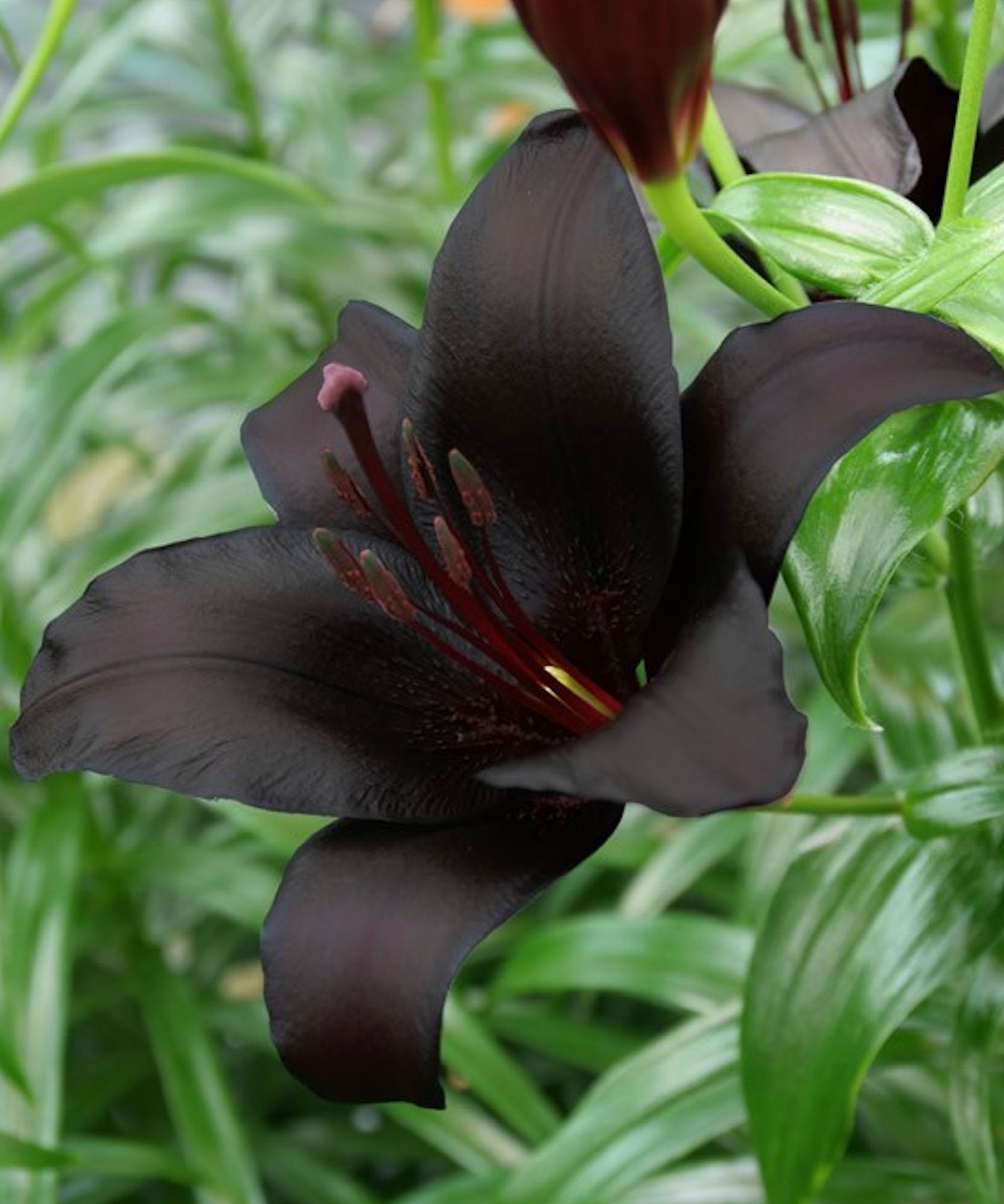
- Hardiness: USDA 3a-8b
- Height: 36in (90cm)
The intense, glossy, almost black, flowers of this new hybrid are very dramatic and make a great for contrast with hot summer colors.
Flowering through mid to late summer, this variety looks stunning combined with dahlias, echinacea and rudbeckia, or other lilies. Slightly shorter that other types of lilies, it is one of the best plants for small gardens and also works well in pots.
4. Lilium speciosum var. rubrum ‘Uchida'

- Hardiness: USDA 5-8
- Height: 48in (120cm)
Also known as the red Japanese lily, this is a later flowering variety, producing flowers right up until the end of summer. The blooms have gorgeous dark pink, reflexed petals edged with white and a good scent.
A hardy summer bulb, it prefers well-drained soils. It looks good planted in groups of three or more and complements late flowering salvias and echinacea in a mixed border scheme.
5. Lilium ‘Lollipop'
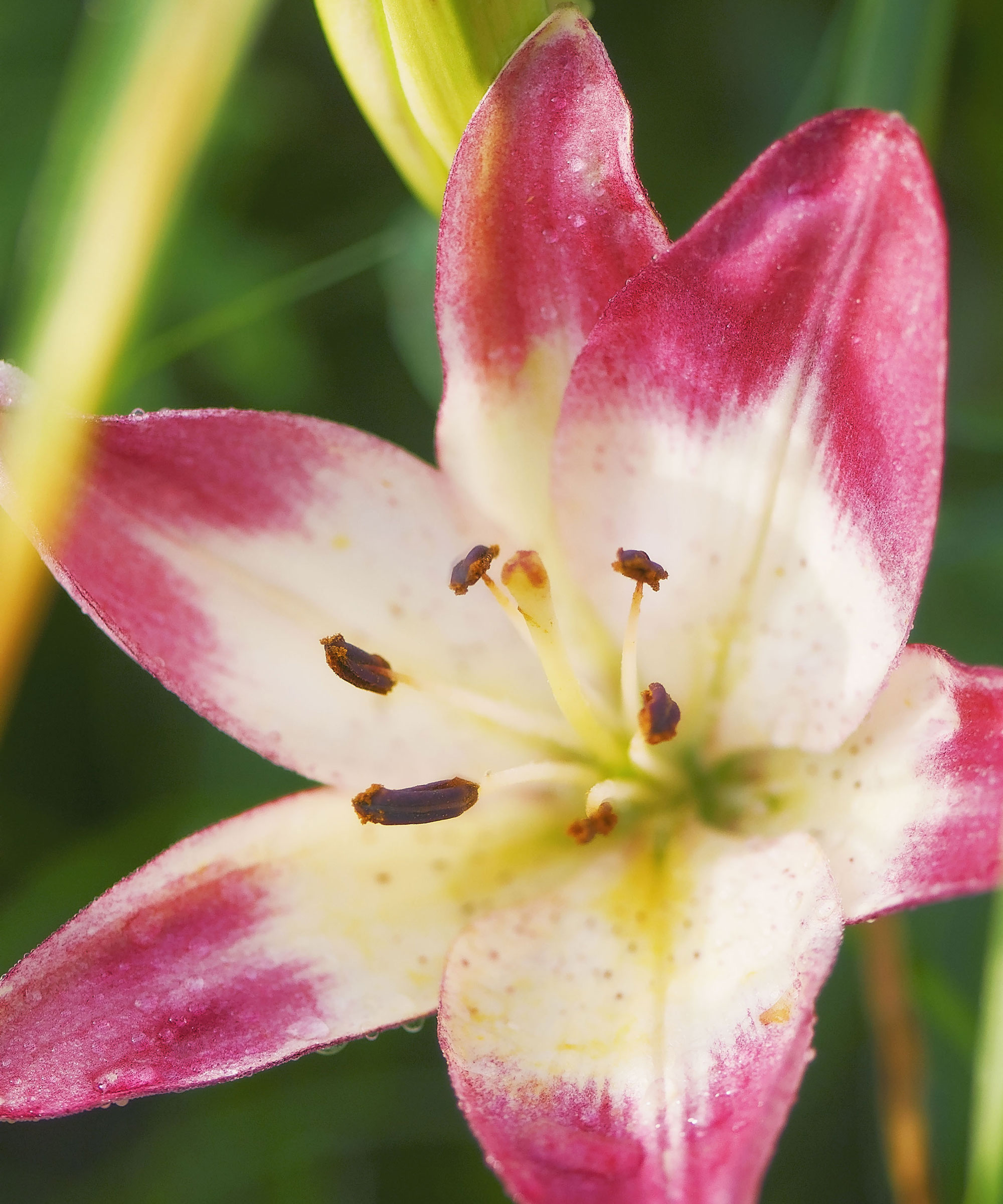
- Hardiness: USDA 4-8
- Height: 17in (45cm)
One of the dwarf Asiatic hybrid lilies with short, leafy stems topped with bright, fragrant flowers. Flowering in early summer, this variety is pale pink tinged with darker edges and planted together makes a perfect summer container plant for balcony garden ideas, table top displays and small gardens.
With typical lily characteristics, it will suit sun or semi-shade and requires plenty of good drainage.
6. Lilium ‘African Queen’
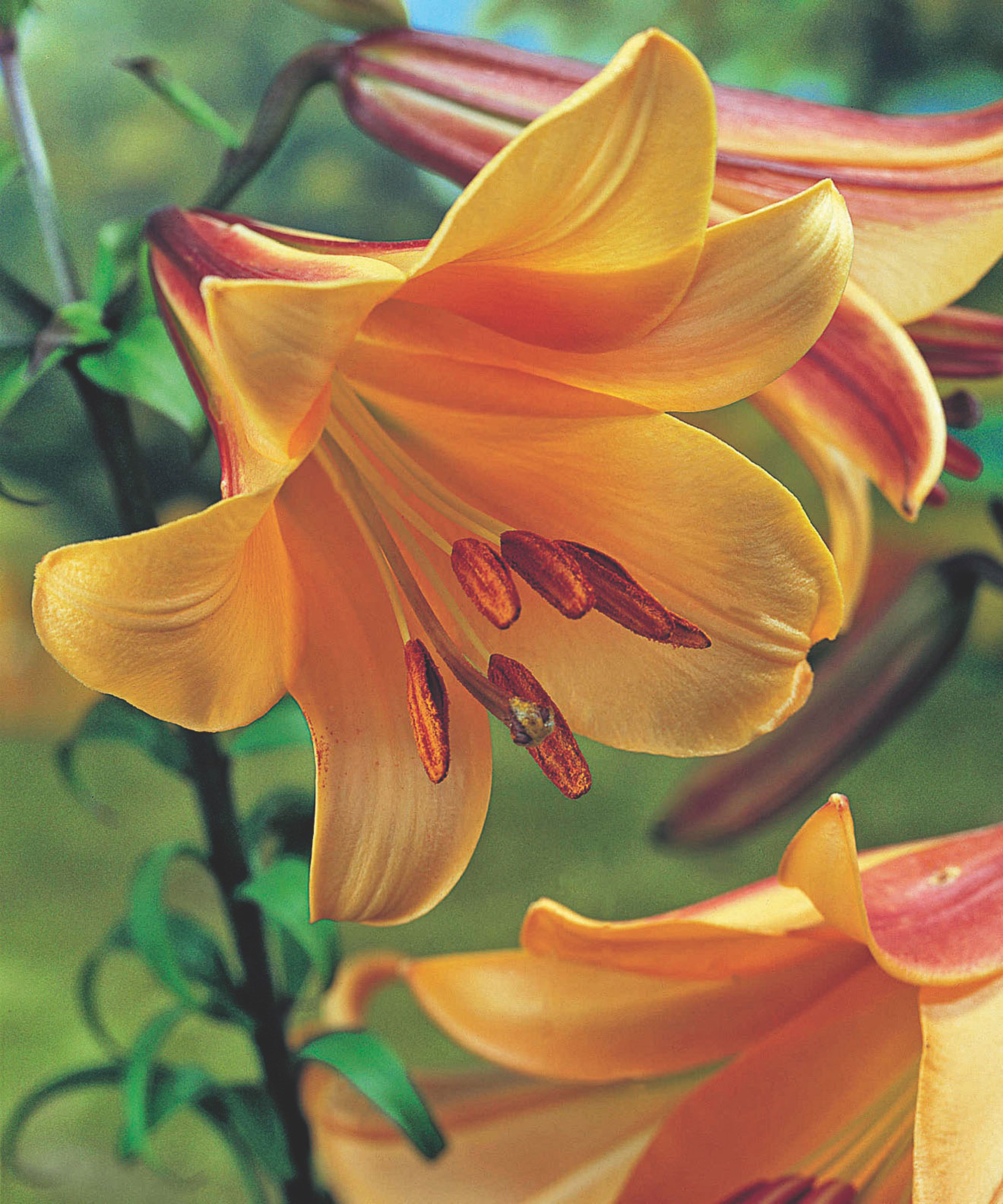
- Hardiness: USDA 4-8
- Height: 72in (180cm)
An Asiatic trumpet form with large, deeply funnelled, elegant flowers appearing in several clusters along each stem, with sometimes as many as 20 blooms. The soft pumpkin-orange color is quite unusual, and the scent is divine.
A tall plant, this will need some plant support in more exposed gardens, but the bulbs are not fussy with regard to soil so it is quite adaptable in terms of pH and has a reputation for being easy to grow.
7. Lilium ‘Mister Cas’

- Hardiness: USDA 5-9
- Height: 72in (130cm)
With an abundance of large white flowers with a yellow throat, this is one of the group also referred to as ‘Orienpet Lilies’ or tree lilies, that mix the qualities of oriental and trumpet lilies together in a relatively new hybrid. Think multiple bold, big blooms on very tall stems. It's one of the best fragrant plants too.
Strong, fast growing, hardy and reliable, and flowering through the height of midsummer, these lilies tick a lot of boxes in the glamorous garden plants category. Good for both garden borders and containers.
8. Lilium 'Kushi Maya'

- Hardiness: USDA 4-8
- Height: 48in (120cm)
This more unusual flower with dark maroon centres to the petals, edged with white, is a mix of Nepalese and oriental types of lilies. A relatively new hybrid, it’s very vigorous with strong stems that hold the many blooms well through mid to late summer.
9. Lilium pyrenaicum
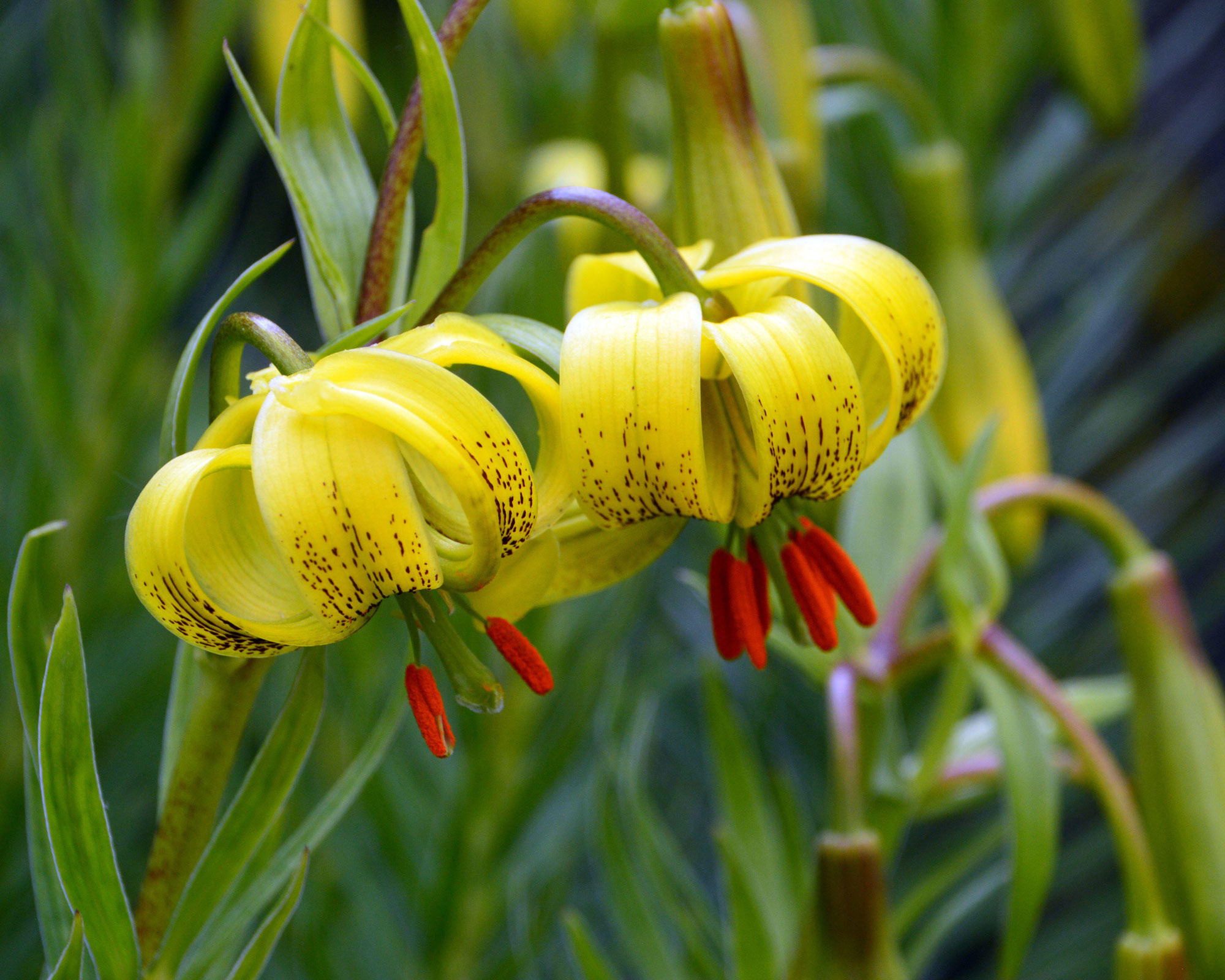
- Hardiness: USDA 4-7
- Height: 48in (120cm)
This is a mountain species from Europe that has naturalised in the UK and can be spotted growing wild. The bulbs are very hard to get hold of although seeds can be ordered if you enjoy the challenge and a long-term project.
Are they worth waiting for? The answer is yes, particularly for natural, wildlife-friendly, meadow-style planting schemes and for their early flower-power. The yellow blooms appear in late spring to early summer and have the Turk’s cap-style petals that curve backwards but lack the lovely fragrance of other lilies.
10. Lilium regale

- Hardiness: USDA 4-8
- Height: 48in (120cm)
This lives up to its royal name, with large, elegant and showy white flowers that make a big impact. With pink ribs on the outer side of the fluted petals, this dramatic Asian lily flowers at the peak of summer, when you can enjoy its heady perfume as you sit outside.
It’s a classic lily, that will add elegance and drama to borders, holding court among more humble summer blooms, and a reliable performer in more alkaline soils.
11. Lilium lancifolium
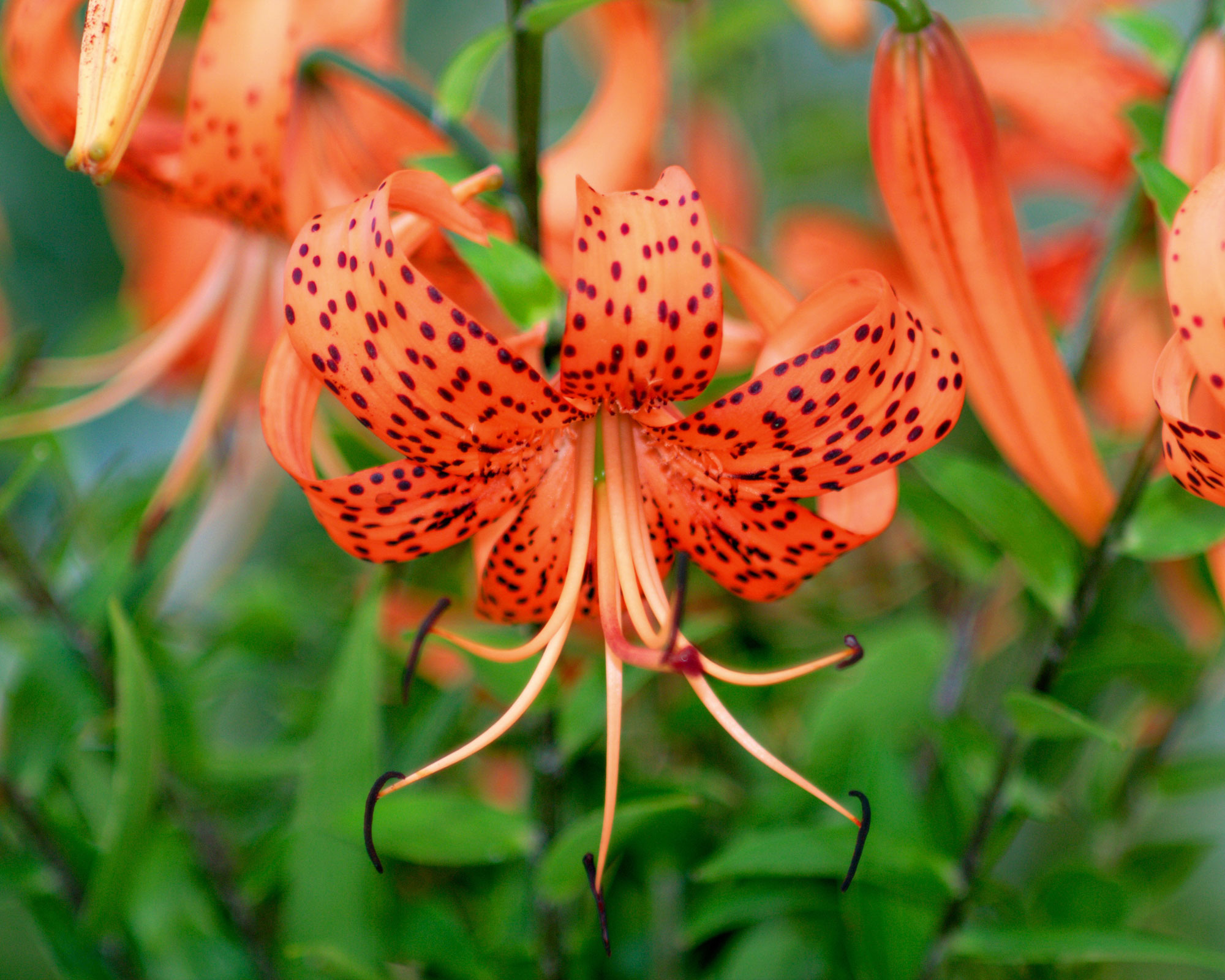
- Hardiness: USDA 3-9
- Height: 24-60in (60-150cm)
A parent plant of the many tiger lily hybrids, this is one of the easiest species lilies to grow. The hot orange flowers are heavily spotted with black and open to about 5in/12cm in size in mid to late summer and each bulb rewards you with many showy blooms.
They can be propagated from the bulblets that form on the stems, but they will naturalise happily in the right conditions in a border too.
12. Lilium tenuifolium pumilum

- Hardiness: USDA 5-8
- Height: 20in (50cm)
The short and dainty stems carry brilliant red, scented flowers with Turk’s cap-style petals that curve backwards. Recommended for naturalistic planting schemes in semi-shade to full sun, but better in more acidic soil this produces flowers in early. It's a good plant for small gardens too.
13. Lilium martagon
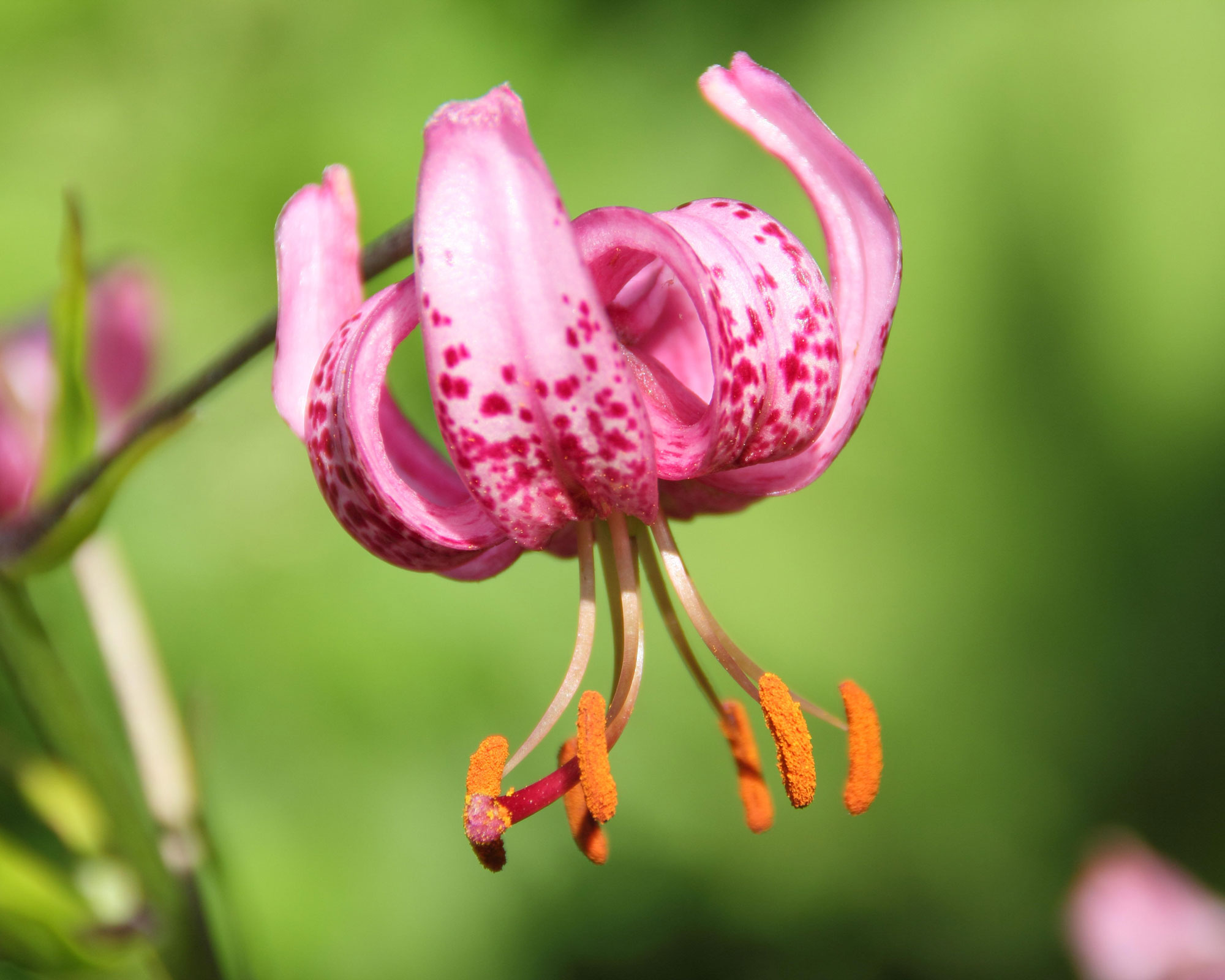
- Hardiness: USDA 3-8
- Height: 48in (120cm)
Martagon lilies are found right across the globe and are great for naturalistic planting schemes. They suit semi-shade so work well with foxgloves and ferns, and make a good follow-on plant from aquilegias.
The small pink, freckled upswept blooms of this species martagon, carried sometimes 20 to a stem, are a candy-colored delight in shadier corners of the garden, in early to midsummer.
They flower reliably, as long the soil is moist but well drained. Add well-rotted leaf mould or garden compost when planting.
14. Lilium ‘Orange Marmalade’

- Hardiness: USDA 3-7
- Height: 48in (120cm)
The elegant dark stems offset the beautiful vibrant, star-shaped orange flowers appearing from late spring to early summer, making this a very bold martagon lily hybrid. It needs cutting back after flowering or can be left to self-seed.
Grow in sun or semi-shade, in slightly alkaline soils, this would look great teamed with the dark flowers of Geranium phaeum (dusky cranesbill) and the tall spires of Digitalis ferrugine (rusty foxglove).
15. Lilium ‘Claude Shride’
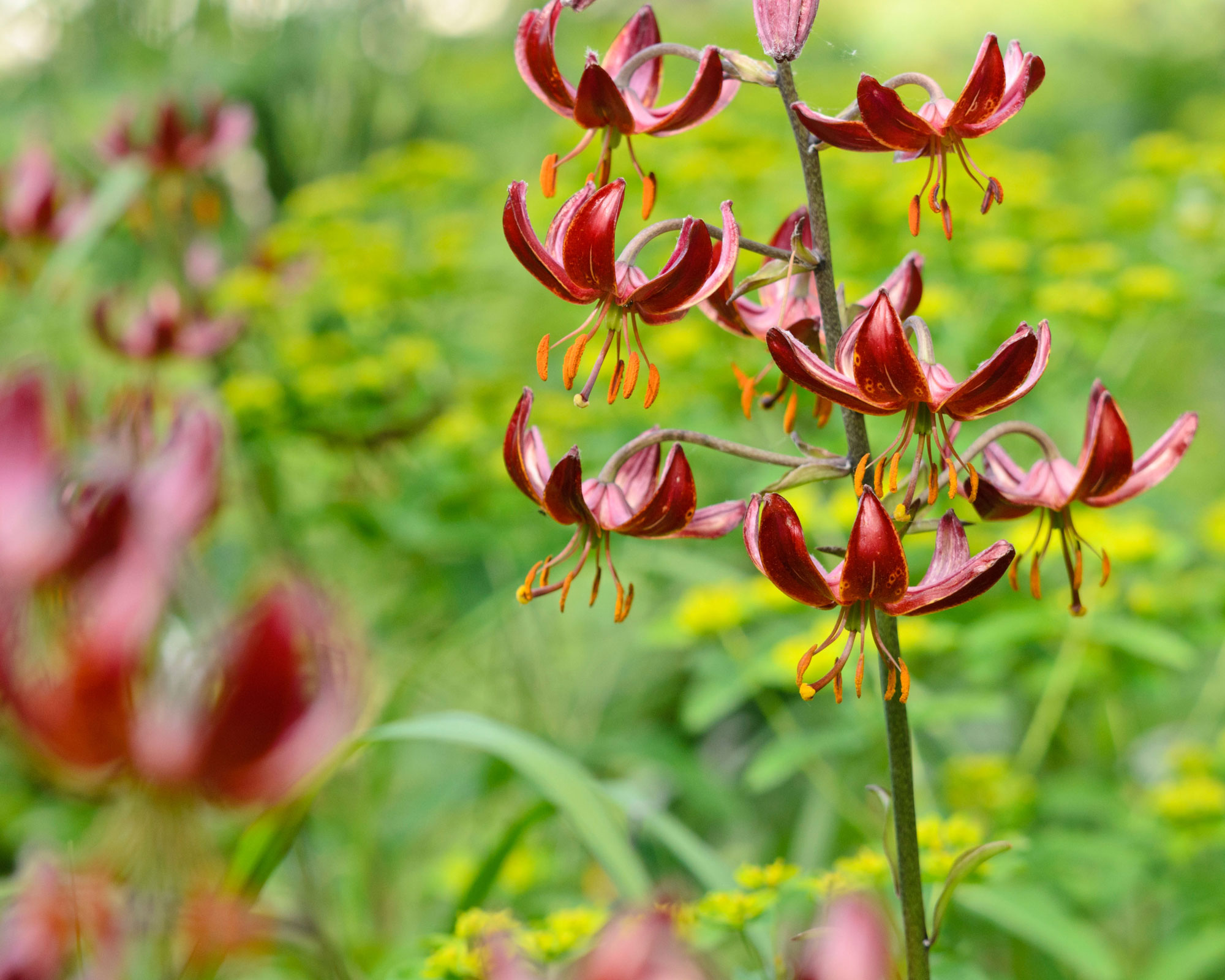
- Hardiness: USDA 3-9
- Height: 48-72in (120-180cm)
With tall stems bearing numerous dark maroon and gold downward-facing flowers, petals dramatically curved back to accentuate the golden anthers, and good seed heads, these make a great addition to borders or containers and, as with most martagons, they are happy in semi-shade, but prefer a moist soil.
They look wonderful planted in large swathes and once established will spread into natural clumps. Combine with ornamental grasses such as Luzula sylvatica (great wood rush) or hakonechloa (Japanese forest grass) to follow on from earlier flowering Solomon’s seal and bleeding hearts (Dicentra spectabilis).
16. Lilium martagon ‘Album’
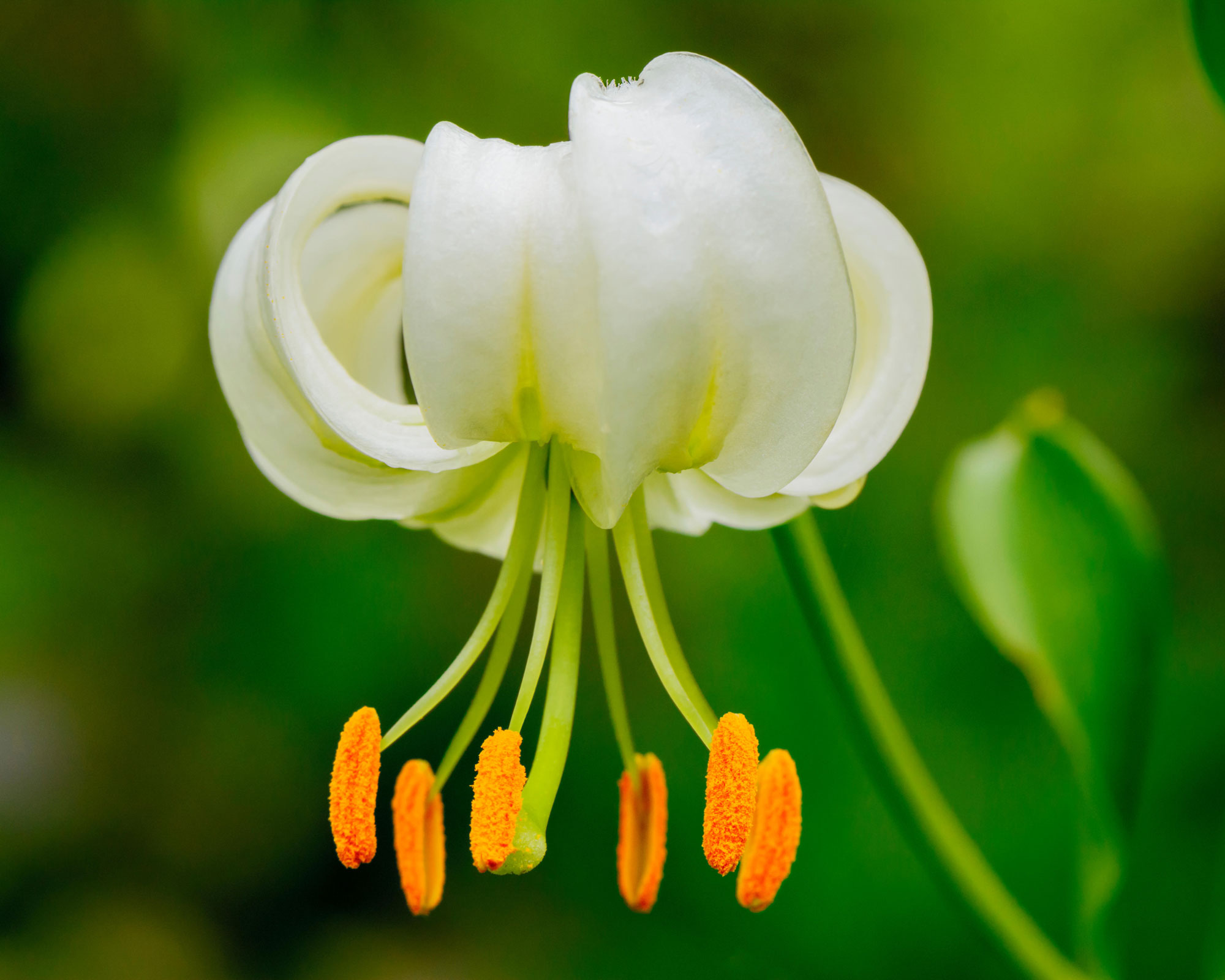
- Hardiness: USDA 3-7
- Height: 48-60in (120-150cm)
A tall, pure white variation, this has petals that curve dramatically backwards. If planted in clumps, this produces an abundance of blooms that will positively gleam in your borders.
Flowering in early summer, it makes a good companion for alliums and grasses and a pretty container plant too. It might look delicate but this low maintenance plant is tougher than it looks.
What are the different types of lily to grow?
There are several different types of lilies to choose from. These are most commonly grouped into Asiatic hybrids, defined by richly colored but unscented flowers earlier in the season and suited to alkaline soils.
Martagon lilies have small flowers with upswept petals that resemble the so-called ‘Turk’s cap’ that gives them their common name.
Oriental lilies bloom later in the summer and thrive in more acidic soils, producing large flowers that are strongly scented.
You will also find other variations including trumpet lilies, known for their large, fluted blooms, and new hybrids such as the ‘Orienpet’ lilies that combine the best qualities of oriental and trumpet types.
Dwarf lily hybrids are a great choice for smaller gardens and patio containers.

Do you need to deadhead all types of lilies?
You do not need to deadhead lilies but you may choose to trim off any old, spent lily flowers to improve the look of the plant. Deadhead flowers once they have faded, unless, as with martagon lilies, you might want to encourage the plant to self-seed.
When deadheading your lilies, only cut stems halfway down. This will allow some energy to be generated from the leaves for the bulb. You can cut dead stems back right to ground level in the fall.


In her years of gardening, Camilla has designed planting schemes for gardens large and small in and around London, written about plants and how to grow them, and worked on BBC gardening TV shows. She's passionate about sharing tips, advice and the joy of plants in this great community of gardeners that we’re all part of, and she now also works as a therapeutic horticulturist, teaching growing for wellbeing and mental health. Her unfulfilled ambition is to crack the ultimate dog-friendly garden - she thinks getting it right depends more on the dog than the plants...
